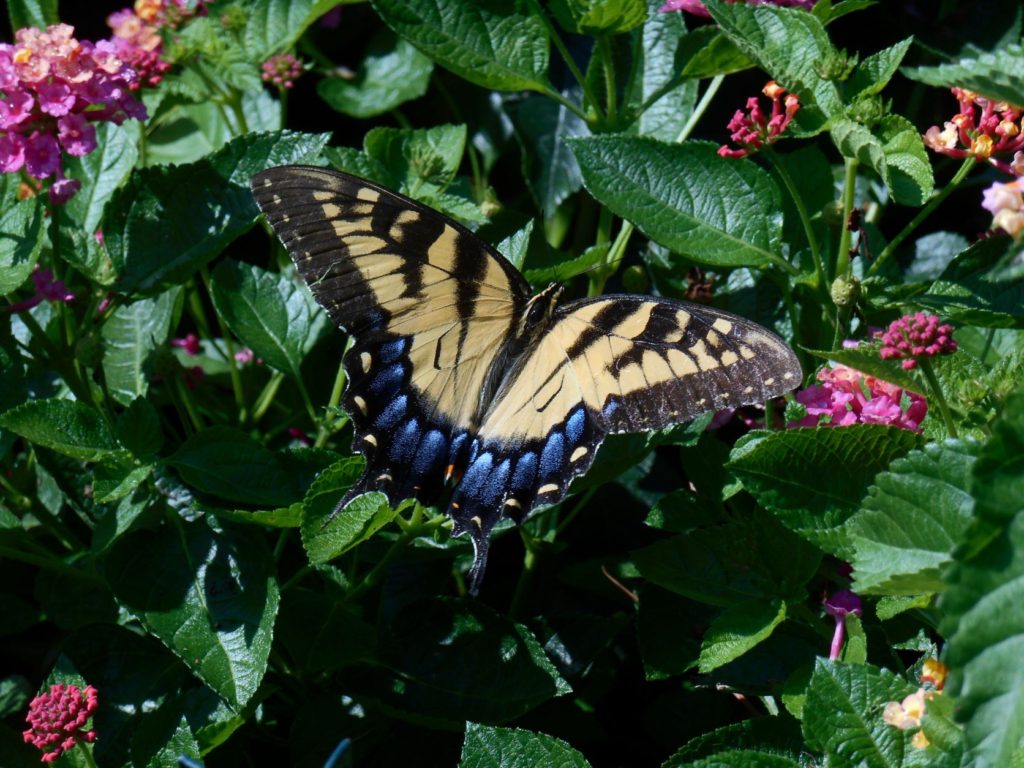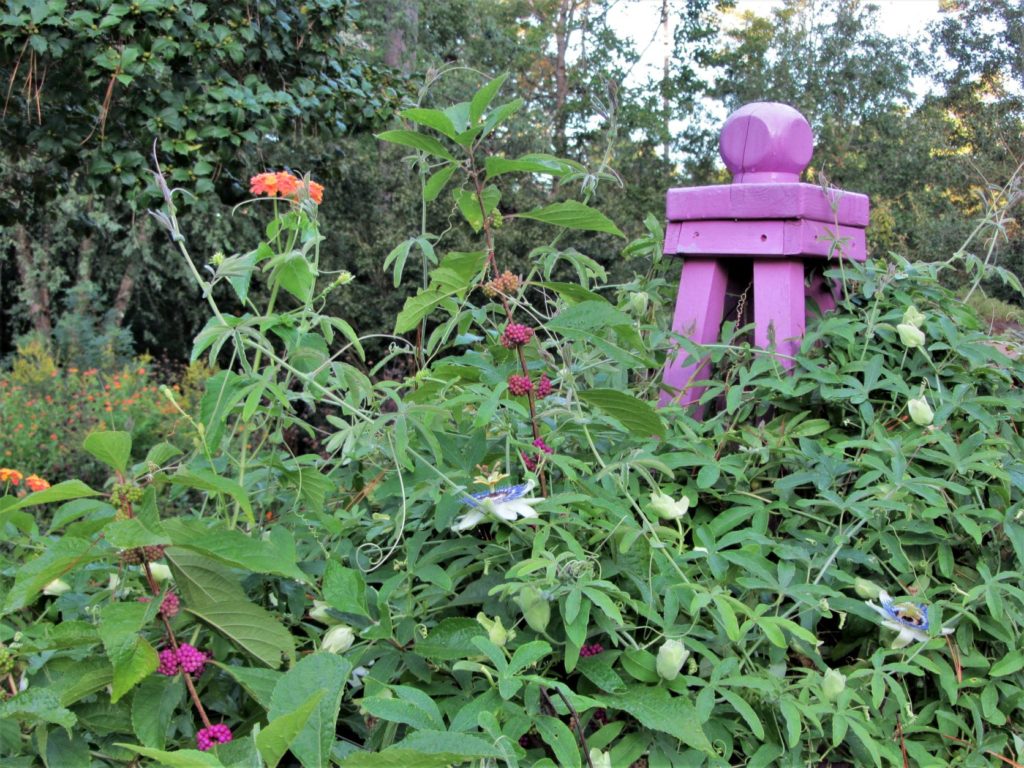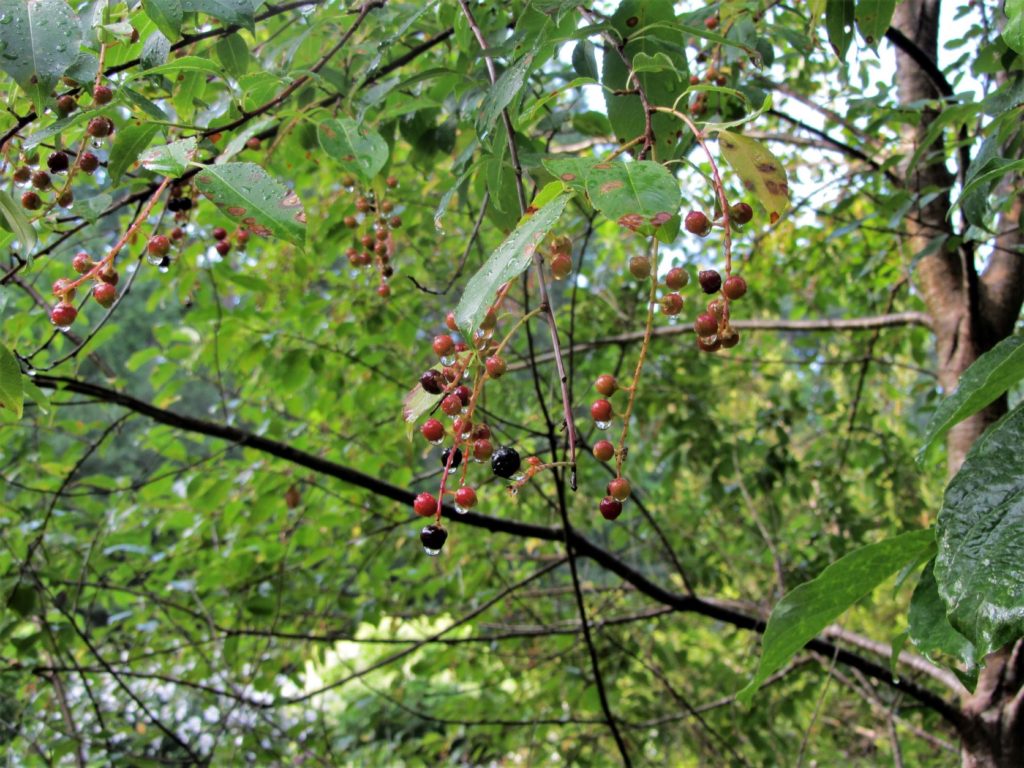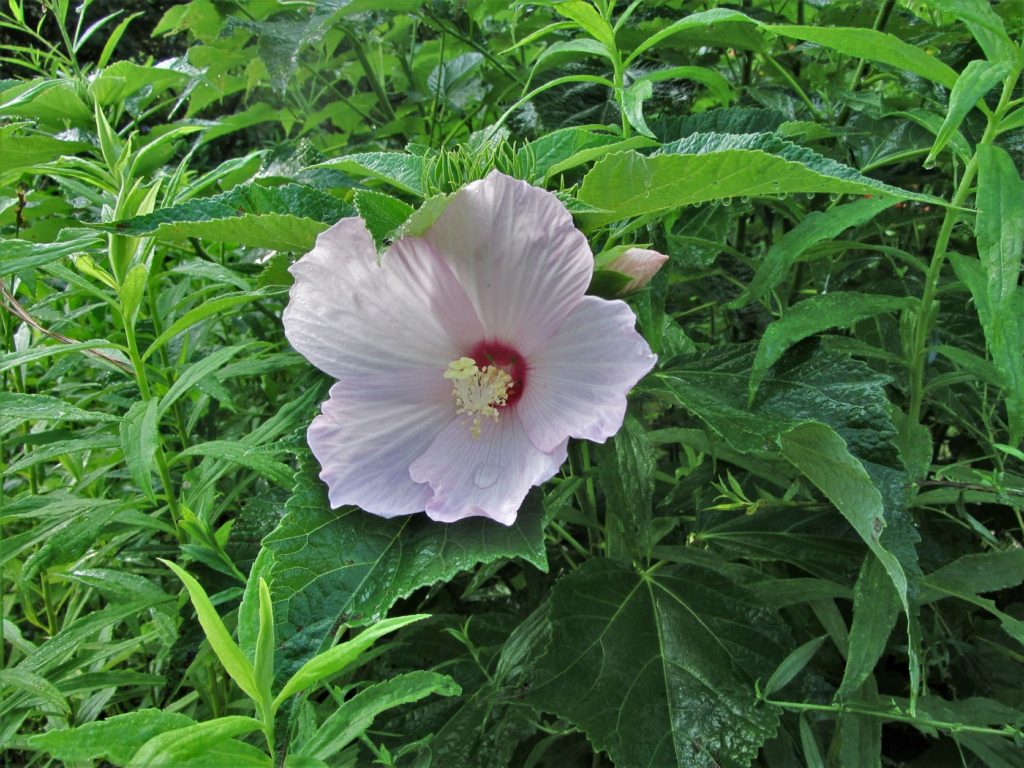Who Is Welcome to Dine?
by Elizabeth McCoy · Published · Updated
Who Is Welcome to Dine?
 A Black Swallowtail butterfly feeds on Verbena bonariensis
A Black Swallowtail butterfly feeds on Verbena bonariensis
.
When planning your garden and buying plants, is your first consideration who, or what, might eat them?
If you are planting fruit trees, tomato vines, or salad greens you’re likely planning to share the fruits of your labor and investment with family and friends. Some friends of mine garden in a community garden, where much of the produce raised is donated to our local FISH organization.
But food crops aside, when planting ornamental plants, do you expect them to get nibbled down to next to nothing?
That is an interesting conundrum that many of my gardening friends grapple with each season. We are inconsistent in our opinions on the subject of who is welcome to dine. I feel irritated with the deer who sneak into our garden and then nibble at our shrubs and flowers. And I’ve been struggling to keep rabbits away from ornamental sweet potato vines planted in some pots, spraying repellents with determination on a regular basis so the vines might grow.
And yet, many, many gardeners plant perennials and herbs specifically to feed the butterflies and their larvae. We sold hundreds of pots of milkweed at the 2019 Butterfly Festival plant sale at the Williamsburg Botanical Garden. I can’t tell you how many gardeners happily bought plants and considered it a bonus to have a resident Monarch cat already munching away on their leaves.
I checked in with a friend the following week. “How is your milkweed doing?” I asked.
“Not so well,” she replied, “All of its leaves are gone.” She thought she had done something wrong in caring for her new plant, to make it lose its leaves. I explained that the reason to grow milkweed is for it to feed and support Monarch larvae. The cats had eaten her plant’s leaves, and the roots were still alive. She should be patient and watch for new growth.
.
.
How many of us are willing to buy plants, expecting their foliage to be eaten away by insects?
A butterfly loving friend visited one afternoon, and as I was walking her back to her car, we detoured into the upper garden. We were watching the hummers, bees and butterflies go about their always hungry business when she spotted a clearwing moth. That was the first one I had seen in that part of the garden in several weeks, and we were both happily watching it feed on the Rudbeckia, when we suddenly noticed a caterpillar covered fennel plant beside us.
The fennel plants had been an afterthought. I had bought them on clearance the previous June, and planted three or four in a sunny spot where I thought they would grow well, but not necessarily where I thought they would add much to the aesthetics of the garden scene.
We could barely see the plant; most of its leaves were already stripped away. It was something like an odd-ball Christmas tree almost completely covered with crawling cats. We counted nearly two dozen.
We were both excited to see so many Black Swallowtail larvae at once, and we found even more on another fennel nearby. Now this was my friend who had released three emerging Black Swallowtail butterflies into our garden that spring, and she was clearly ready to adopt these cats.
.
I was happy for her to take them since the food source was nearly all gone. I knew she would patiently feed them organic parsley until they pupated, and then eventually would bring at least some of them back to release here, when they were ready to emerge from their chrysalis and fly. What a magical experience to watch a butterfly emerge from the husk of what was once a caterpillar!
More and more, my plant choices aren’t so much about form and color to please myself. Instead, I choose plants to support various birds, butterflies, hummingbirds, bees, wasps, and other pollinators. We love watching them feed and go about their life cycles.
.
.
I used to make the distinction that pollinators suck nectar but leave the plant intact. That is how I shaped my thinking to support pollinators, while still trying to keep the deer away. Rabbits are always welcome to graze our front lawn, eating whatever grass or other plants may grow there, but the voles who eat the roots of things, are not. I confuse myself sometimes making these distinctions about who is welcome to dine, and who is not.
And now my mind and heart have opened to include the caterpillars happily munching away on herbs and other host plants. They are welcome, and I happily plan for their sustenance, too. I spent a happy afternoon observing caterpillars and asking a friend smarter than me to teach me about them.
We often pause to take pleasure in the flight of hummingbirds and butterflies. One afternoon, I thought I saw a yellow leaf, gently falling to the ground. Only the leaf landed on the Lantana and fluttered there, revealing itself to be a beautiful male Tiger Swallowtail butterfly.
.

A female Tiger Swallowtail butterfly feeds on Lantana. Females have blue markings on their wings while males do not.
.
I read, recently, that environmental psychologists from a number of universities have determined that quietly listening to birds singing is more relaxing than most medications people take to cope with the stresses and disappointments of modern life. I would add watching butterflies feed, and listening for hummers, as simple pleasures that bring us great happiness and contentment. We know that spending time outside in woods, gardens and parks does wonders for our mood and our creativity.
Happiness and contentment often follow when we open our hearts to generously provide for others beyond ourselves. I would suggest that planting a wildlife garden is a good antidote to the stresses and sorrows of life.
.

The Williamsburg Botanical Garden is planted to support a wide variety of wildlife, including birds and pollinating insects.
.
Ironically, certain native trees support the most species of butterflies and moths, as well as providing habitat and food for many other animals. In fact, insect larvae, often living high in the canopy of trees, are the primary food source for most of our beloved songbirds. Oak trees serve as host plants for more than 500 Lepidoptera species. Of course, different oak species host different moth and butterfly species across the Earth. Oaks in our own area support a fraction of that number, only those insect species also native to our region.
Black cherry, Prunus serotina, is another excellent host plant, supporting more than 400 species of Lepidoptera. It also provides shelter, abundant nectar when it blooms, and small fruits for birds and other wildlife later in the season. Other valuable host trees in our area include willows, birch, poplars, maples, and pines. Paw paw trees support the Zebra Swallowtail. Another popular local butterfly, the Spicebush Swallowtail, is hosted by sweetbay Magnolia and tulip trees, Liriodendron tulipifera, in addition to their namesake spicebush, Lindera benzoin.
.

The native black cherry tree, Prunus serotina, feeds early pollinators when it blooms in the spring, and feeds birds and small mammals when its fruit ripen in summer.
.
Shrubs, like native blueberries and huckleberries, also support many Lepidoptera larvae. Herbs such as parsley, fennel, cilantro and dill host Black Swallowtails. While some butterflies use several different host plants, a few, like Monarchs, use only one genus of plant. We plant milkweed, Asclepias species, to support Monarchs. It always amazes me how butterflies will find the species they need to lay their eggs. Add a host plant species, and you also add new species of butterfly to your garden.
Of course, most of us enjoy watching butterflies and moths nectaring from a variety of flowers. The flowers we plant to attract pollinators might support a variety of butterflies, hummingbirds, bees and other small creatures while in bloom, before birds feast later on their seeds.
A variety of native and non-native blooming plants will provide abundant nectar throughout the year. Certain flowers seem to attract a lot more attention from the winged ones, however. For steady and consistent air traffic in your garden from spring through autumn, be sure to include Lantana, Agastache, Salvias, Rudbeckias, and Verbenas. Shrubs that bloom over many months, like Abelia and Hibiscus, also draw in a steady stream of beautiful diners.
Perhaps we can offset some of our other environmental transgressions a bit, by creating a safe space to nurture wildlife. Their needs are simple: food, water, shelter, and resources to nurture the next generation. A safe and beautiful place, free of insecticides, to find joy and peace of mind for ourselves, too.
All Photos by E. L. McCoy
.

Native Hibiscus moscheutos attracts many native bees, butterflies and hummingbirds. Its seeds feed birds and small mammals in winter.



